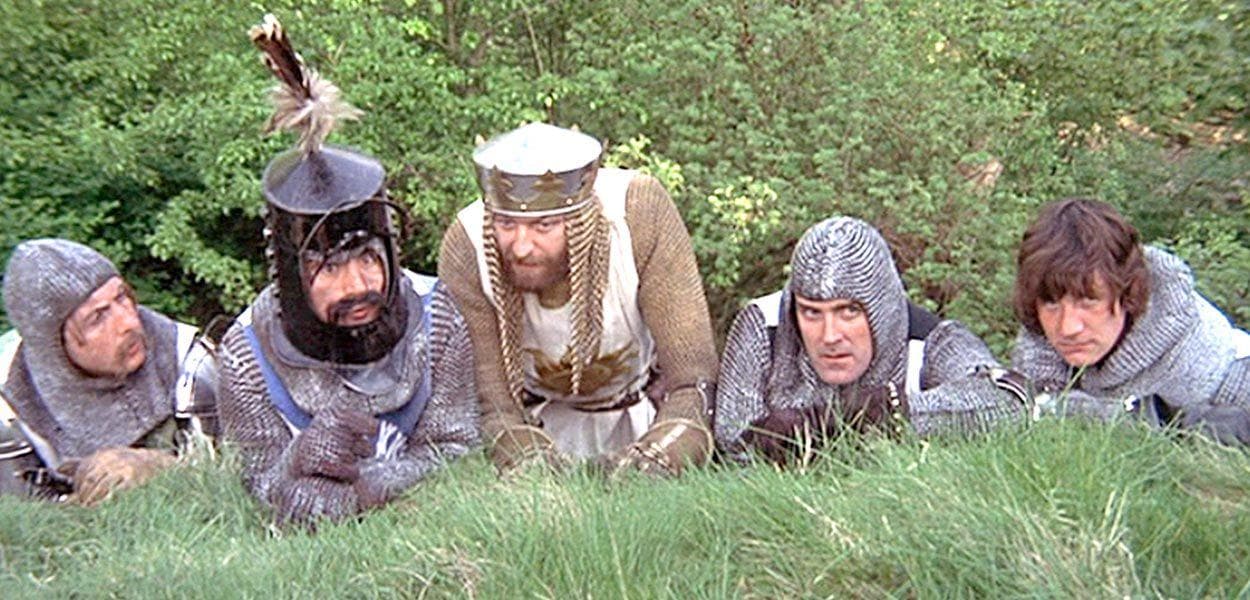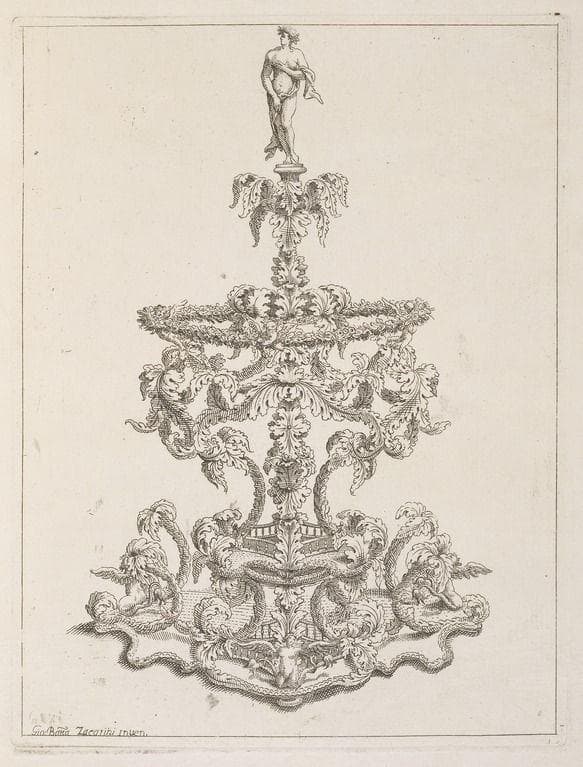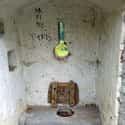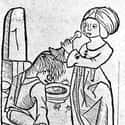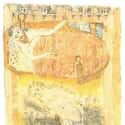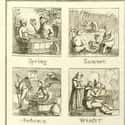-
(#5) Bathing Was Often Communal, Both In Public And Private
Bathing in public - whether in a stream or at a bathhouse - was performed as a communal activity. Even private bathing involved other people during the medieval period. The process of preparing a bath for a medieval castle-dweller involved someone hauling water from a nearby water source; once enough water was poured into the tub, it had to be heated. As the entire process required significant energy and expense, more than one person would often take advantage of the bathing opportunity.
In some instances, bathers even had an attendant or servant to refresh their hot bathwater, similarly preventing any solitude while bathing.
Baths were also associated with sensuality. Boccacio wrote about one such shared bath, which featured a widow with whom Marchese Azzo of Ferrara bathed regularly, as well as a young merchant named Rinaldo d'Asti. According to the tale, the lady heard Rinaldo groaning from the cold outside of her room and found him "shivering all over." She asked him to "step into [her] bath, which [was] still warm." After doing so, he dined with her before joining her in bed.
-
(#9) Shaving Was Performed In Pairs
While mirrors did exist in the Middle Ages, they were cloudy and very small, meaning shaving was often a joint activity for commoners. Visiting the local barber - who was also usually the local surgeon - was preferable to removing one's own facial hair with a sharp blade.
Monks helped one another shave in order to maintain their tonsures. Shaving took place at specific times of the year and was sometimes done communally, although a monk in need of purification may have been shaved more often.
Women relied on plucking or depilatories for hair removal. Eyebrows and hairlines were tweezed, and substances such as walnut oil, vinegar, and even dried cat waste were used to remove hair.
-
(#7) Human Waste Was Disposed Of In Cesspits
Although running water as it is used today didn't exist in the medieval era, monasteries often featured latrines. These were toilets built over streams and other water sources to literally flush out the waste. The latrines were sometimes placed over pits located on higher ground so they could drain into nearby rivers and streams.
People also relieved themselves using cesspits, which were holes lined with stones or wooden planks. These were covered when not in use to prevent odors from wafting. Many castles featured similar structures - such as privy chambers, garderobes, and necessaria - and could include a dozen wooden seats with ventilation and water access.
Outhouses were also utilized, but if a person couldn't find a place to relieve themselves, a nearby cesspit was always an option. Emptying a chamberpot into a local cesspit was another way of discarding of human waste.
-
(#10) Lice And Fleas Were Pervasive
The medieval world was plagued by lice and fleas - miniscule creatures found in bedding, clothing, and hair. Even the most wealthy of medieval aristocrats and holiest of monks fell victim to bugs - St. Francis of Assisi was said to have called fleas and lice "pearls of poverty" - and delousing was common.
Delousing was usually carried out by women and often "[took] place in bed, or by the fire, at the window or on the shoemaker's bench." Raymonde Guilhou was deloused "in full view of everybody in the doorway of the 'ostal' [hospital]." Women would brush or comb parasite-infested hair with implements resembling brooms.
-
(#3) Women Commonly Washed Their Hair Every Saturday
The regularity with which women bathed during the medieval period varied, but hair-washing took place regularly. Often a task reserved for Saturdays, women washed their hair to "rinse away all the dust and grime that may have accumulated through the course of the past week's labors."
Peasants and commoners may have washed their hair less often, but regardless of regularity, the process was very involved and may have required assistance. Women would remove their clothes from the waist up and have water poured over their heads using a pitcher of water and a basin. If available, a pseudo-shampoo made from oils, herbs, and minerals was applied and rinsed out.
-
(#11) People Followed Daily Hygiene Regimens
Salerno medical school, one of the major medical schools in medieval Europe, published a guide for healthy, hygienic living in the 12th or 13th century. Drawn from classical texts like those of Hippocrates and Galen, as well as Arabic works, Regimen Sanitatis Salernitanum included healthy diet advice, headache remedies, and even morning health disciplines. According to the Regimen:
In the morning upon rising, wash your hands and face with cold water; move around awhile and stretch your limbs; comb your hair and brush your teeth. These things relax your brain and other parts of your body.
Baths were advised - albeit in moderation - to counteract the effects of exercise, laxatives, and sweating. Other treatises like the Secret des secrets, translated into Latin during the 14th century, advised baths during certain times of the year, but also cautioned that staying in a bath for too long could make a person "feeble."
New Random Displays Display All By Ranking
About This Tool
The Middle Ages has almost always been called the "Dark Age" in history, but most rumors about hygiene are wrong, developed water supply and sanitation systems were built in the city, the government at that time also paid attention to the disposal of garbage and excrement. The sanitary facilities of some luxurious medieval castles are still high-level even in modern society.
Except for the complete social health protection system, the people in the Middle Ages also paid attention to body cleanliness, and their hygiene concepts and habits were very advanced. Have you ever dreamed live in medieval castles? The random tool introduced 11 details about what was hygiene like in medieval castles.
Our data comes from Ranker, If you want to participate in the ranking of items displayed on this page, please click here.




